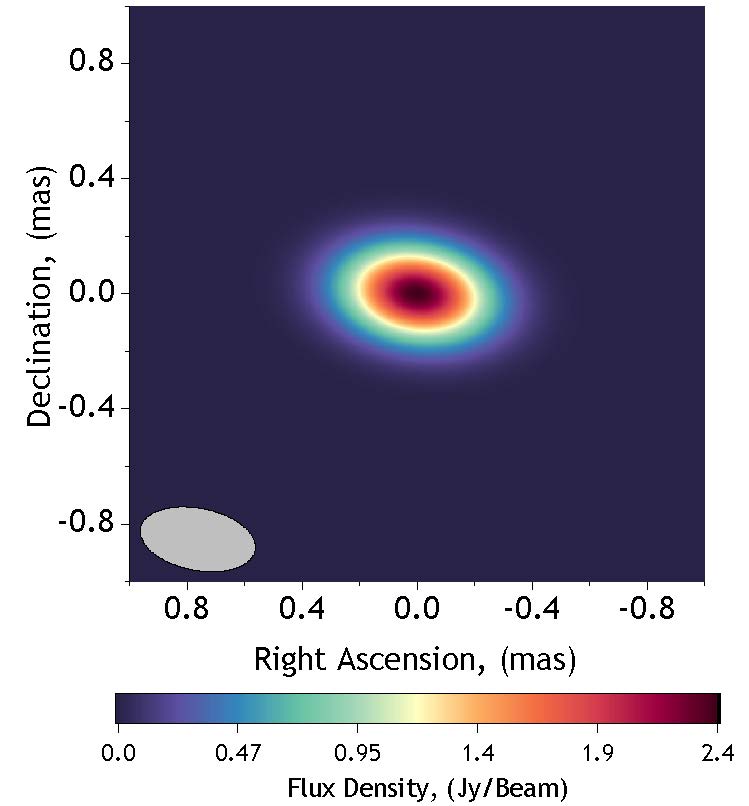Scientists from Russia and the Republic of Korea have successfully correlated multifrequency synthesis observations conducted by ground-based telescopes and the Radioastron space observatory, becoming the first scientists to test this observation technique in space. Thus, scientists obtained an image of the core of an active galaxy located 12.5 billion light-years away from Earth. This study was published in the Journal of The Korean Astronomical Society.
Multifrequency synthesis in radio astronomy is a way to observe space objects at multiple frequencies. This can be done both simultaneously, using multi-frequency receivers, and sequentially, by switching the frequency of the detector.
Using this technique, it is possible to increase the sensitivity of the telescope, obtain more valuable information about the observed source, and improve the quality of the reconstructed images of galactic and extragalactic sources.
The use of multi-frequency synthesis is becoming increasingly popular among radio astronomers. It is particularly useful for millimeter wave bands (frequencies greater than 230 GHz). At these frequencies, the Earth's atmosphere introduces significant distortions into the received signal, which reduces the sensitivity of telescopes and the quality of data they receive. Multifrequency synthesis has been applied to some ground-based observatories in recent years. However, until recently, this technique had not been successfully applied to observations with space telescopes.
According to a new study, Russian and South Korean scientists used data obtained in 2017 under the RadioAstron program in the multifrequency synthesis mode. Their target was the blazar 0059+581, which is located 12.5 billion light-years from Earth. Tanma, Ulsan, Yonsei, Medicina, and Torun observatories participated in the multifrequency observations along with the space telescope. There was a frequency range of 18 to 25 GHz, and the maximum baseline projection was 1.5 Earth diameters. Joint observations lasted 48 minutes.
Processing of the obtained data showed the correct operation of the Radioastron multifrequency mode. Analyzing the results also revealed that it is possible to measure the parameters of the blazar 0059+581 and construct its image within a short period of observation.
The results obtained confirm the benefits of the multifrequency synthesis method for radio astronomy observations. A multi-frequency synthesis mode is now planned for the Event Horizon Telescope and the Millimetron space observatory currently being developed.
